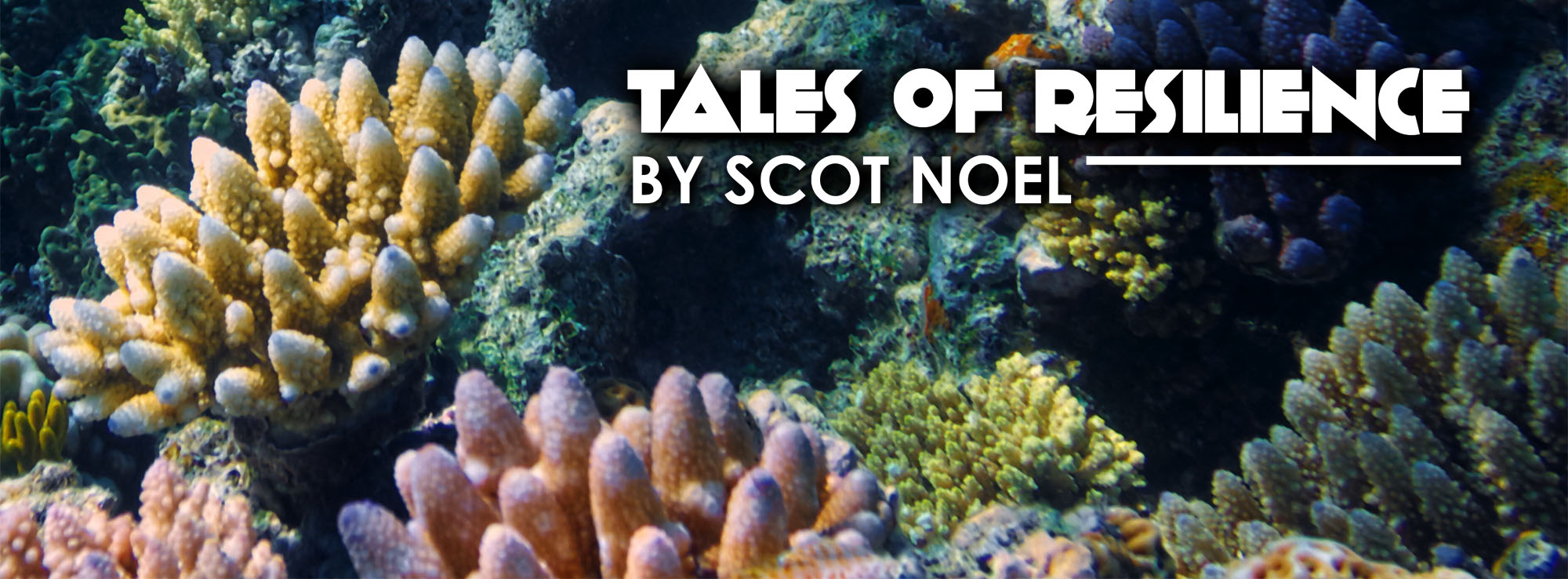 Tales of Resilience
By Scot Noel In the face of continuing encroachment of civilization, rising sea levels, and climate change, life still finds a way. Let’s take a look at three unexpected success stories of the natural world as it deals with stressors of the Anthropocene age.
Australia’s Great Barrier Reef Defying all expectation and considered on the edge of collapse for decades, the Great Barrier Reef (GBR) just had a record growth year. The observations come from the Australian Institute of Marine Science and indicate that continued coral recovery has led to 36-year highs across two-thirds of the reef. Leading the way are the fast-growing Acropora corals, which are the dominant group of corals on the GBR and mainly responsible for hard coral cover. The GBR battles a variety of stressors, including heat stress from rising water temperature, crown-of-thorn starfish outbreaks, bleaching events, and cyclone impacts. The recovery is credited to lower levels of acute stress over the past 12 months. In a world of climate change, coral stressors may increase, compound, and continue to threaten the health of the GBR, but now how quickly the reef can rebound given even a short breathing spell has been demonstrated for all to see. The Demilitarized Zone Separating North and South Korea is a demilitarized zone (DMZ) that is 160 miles long and 2.5 miles wide. That’s about 400 square miles of rivers, coastline, mountains, swamps, forests, and grasslands. It’s a place where no human sets foot, and apart from the occasional shots fired at guard posts in provocation, 2900 species of plant and 70 species of mammals thrive. While it’s difficult to study the DMZ, there is some indication that this Korean no-man’s land may be home to extremely rare species like the Siberian Tiger, the Amur Leopard, and the Asiatic Black Bear. While it is difficult to have the governments in Pyongyang and Seoul agree on the time of day, they have decided that —in the event of any future reunification— that the DMZ must remain a protected habitat, securing the future for the biodiversity it represents. For 70 years, the DMZ has been a de facto wildlife sanctuary, and some conservationists worry that eventual peace might be the biggest threat to this place where indigenous flora and fauna have been able to grow in wild and unrestrained glory. Chernobyl In 1986, the world suffered its worst commercial nuclear accident when Number 4 reactor at the Chernobyl nuclear power plant in northern Ukraine experienced an explosion and subsequent fire that released large amounts of radiation into the atmosphere. 350,000 people were evacuated from the area and resettled as a result of the accident. Because humans are relatively long-lived and susceptible to radiation induced cancer, the best guess as to when the affected area will be suitable for human habitation again is— around 20,000 years. Even so, Chernobyl today is no ashen wasteland, nor does Godzilla live there. The area was deemed safe to visit (overnight in the outer exclusion zone is fine) in 2011. The big news, of course, is that scientists have documented brown bears, wolves, bison, moose, lynx, foxes, and many more species making Chernobyl their home. Greater Spotted Eagles, along with 200 other species of birds have also returned to the zone and are thriving. Of course, radiation in the area did take its toll. A 4 square-mile area of pine forest died due to the absorption of ionizing radiation. In some studies, it was found that genetic mutations were more than 20 times the expected level, and invertebrate populations suffered a steep decline. Lethal physical mutations occurred early on in many animal populations, but over time, it has turned out that the presence of humans was more of a threat to Chernobyl wildlife than increased radiation. So it is that the Przewalski’s horse, an endangered wild species from Mongolia, is today thriving within the Chernobyl exclusion zone. Life’s Resilient Future As humans, we have a possessive familiarity over the world as we were born into it. We see our age on Earth as special. And for the first time as a species, we’ve become aware of how our populations, industry, and technology can affect the natural world. But the natural world has dealt with asteroid impacts, ice ages, super vulcanism, and the imbalances that occur in evolution itself for about 4 billion years. As Earth’s most successful and invasive species, we can deliver monumental damage to every ecosystem we encounter. And, recovery from past “natural” extinction events has taken as much as 10 million years. If recent examples of resilience are any guide, however, whether humans learn to live in balance with Earth’s ecosystems or just move our civilization off world, it would seem nature may recover from the stressor of mankind more quickly than most. |
 |
DreamForge Anvil © 2022 DreamForge Press
Tales of Resilience © 2022 Scot Noel